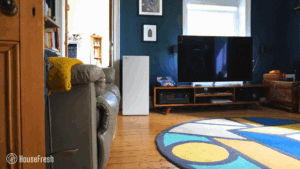Coway is the manufacturer behind the most popular air purifier in the world, the Airmega AP-15122HH which has been the number one pick from the team at the NY TImes’ Wirecutter since 2014.
The Airmega 250S is a relatively new model that has been around since the end of 2021, and has been very well received by the press. So well received, in fact, that one reviewer referred to it as “the Wagyu Beef of Air Purifiers”…
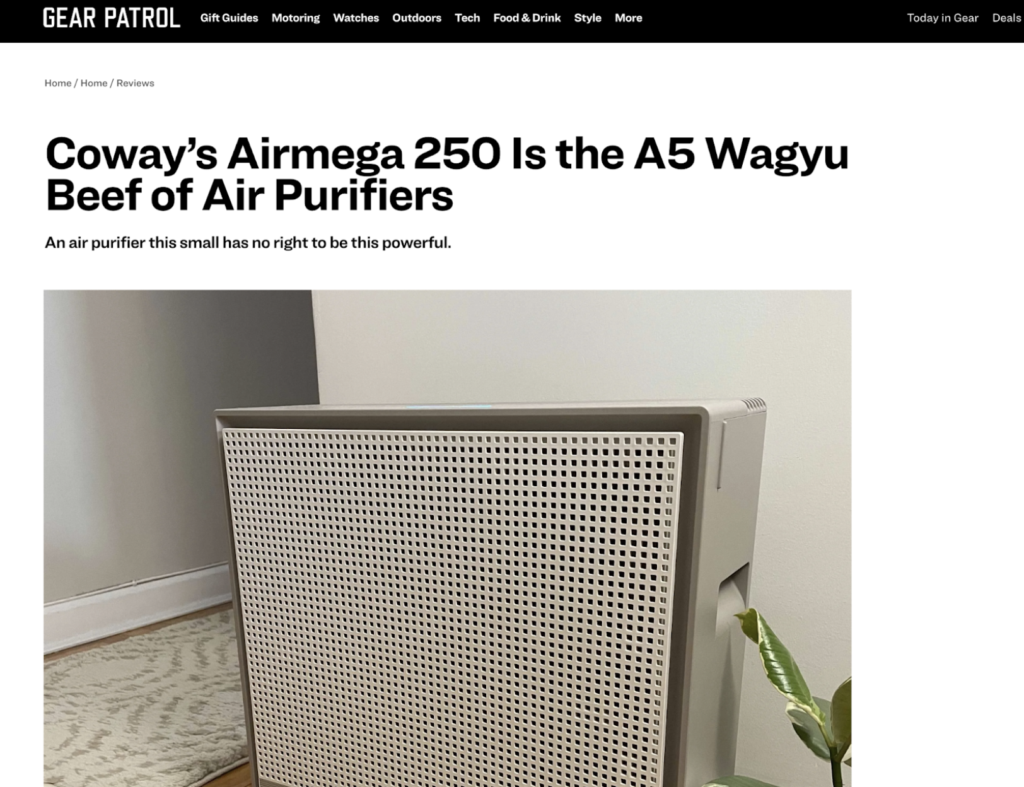
That got me even more interested in testing its performance.
As always, we bought the Airmega 250S with our own money to experience the customer journey just as you will and remain unbiased without any special deal or connection to Coway.
The overall score for the Dyson Big+Quiet BP06 incorporates first-hand data results from our battery of tests, as well as our ratings for customer service, brand transparency and design & UX. Check out the full scorecard below to see the split of categories.
The pros and cons of the Coway Airmega 250S
A summary of our top-level findings after testing this air purifier following our methodology.
“The Airmega 250S has excellent build quality and is beautifully designed, so it is a good option for those who are happy to spend a little more on an air purifier that will look great while cleaning the air.
However, if you are sensitive to noise, you might want to pass on the 250S because it doesn’t offer good air cleaning performance under 45 dBA.”

HouseFresh Founder
& Lead Tester
If you don’t want to read my full review of the Coway Airmega 250S, here are the three things I like and the three things I don’t.
CONS
PROS
| Clean air delivery rate (CADR): | – Top speed PM1 CADR: 249 cfm – Sub-45 dBA PM1 CADR: 91 cfm – AHAM PM2.5 CADR: 261.2 cfm (dust) |
| Filter technology: | True HEPA filter with pelleted activated carbon and a washable pre-filter |
| Recommended room size: | 373 sq. ft. (5 air changes per hour) |
| Dimensions: | 18.5 x 19.7 x 8.3 in (47 x 50 x 21 cm) |
| Weight: | 20.5 lb (9.3 kg) |
| Noise level in decibels from 3 ft. away: | – Sleep mode: 35.7 dBA – Speed 1: 36.5 dBA – Speed 2: 50.2 dBA – Speed 3: 59.3 dBA |
| Electricity consumption in watts: | – Standby mode: 1.76 watts – Sleep mode: 4.53 watts – Speed 1: 6.52 watts – Speed 2: 22.01 watts – Speed 3: 57.71 watts |
| Filter lifespan: | 6 – 12 months |
| Manufacturer’s warranty: | 3 years |
| Country of origin: | South Korea |
| Country of manufacture: | South Korea |
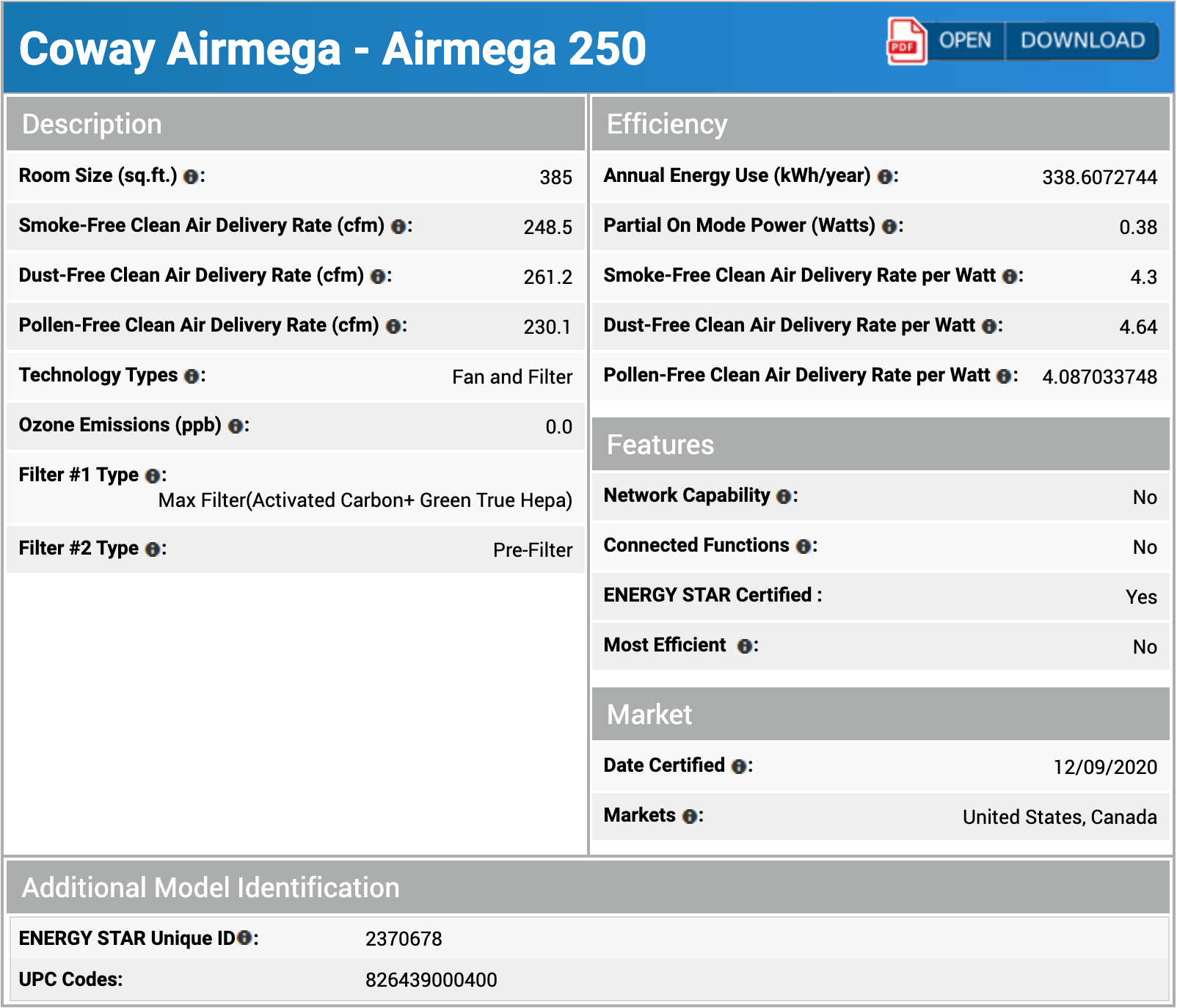
The best Airmega 250S feature: Retro-inspired design built with high quality materials
The 250S has been built to last and is guaranteed to look great in most rooms.
If you’re reading this review, it’s probably because you saw the 250S and thought the design was worth paying extra compared to other air purifiers from Coway.
I’ll be honest, as soon as I unboxed this device, I became obsessed with how it looks. I am not one to care about design or aesthetics but the Airmega 250S really made me notice. And it’s not just how nice the retro-inspired design looks — from the plastic chassis to the braided cable, this thing has been made with high quality materials.
Filtration technology
The Airmega 250S comes with a bonded H13 HEPA filter with pelleted activated carbon and a removable pre-filter that is also washable.
With the Airmega 250S, Coway moved away from the non-bonded filters we’ve seen in the past from models such as their incredibly popular AP-15122HH or the newer Airmega 200M. And unlike those models, the 250s also lacks an ionizer function.
It comes with an all-in-one filter they call ‘Max 2’ filter with a Green True HEPA particle filter on one side and a gas filter with pelleted carbon on the other.

The removable pre-filter on this unit is really high quality and slides into place beautifully. I like that it’s washable so you can rinse it, dry it and place it back.
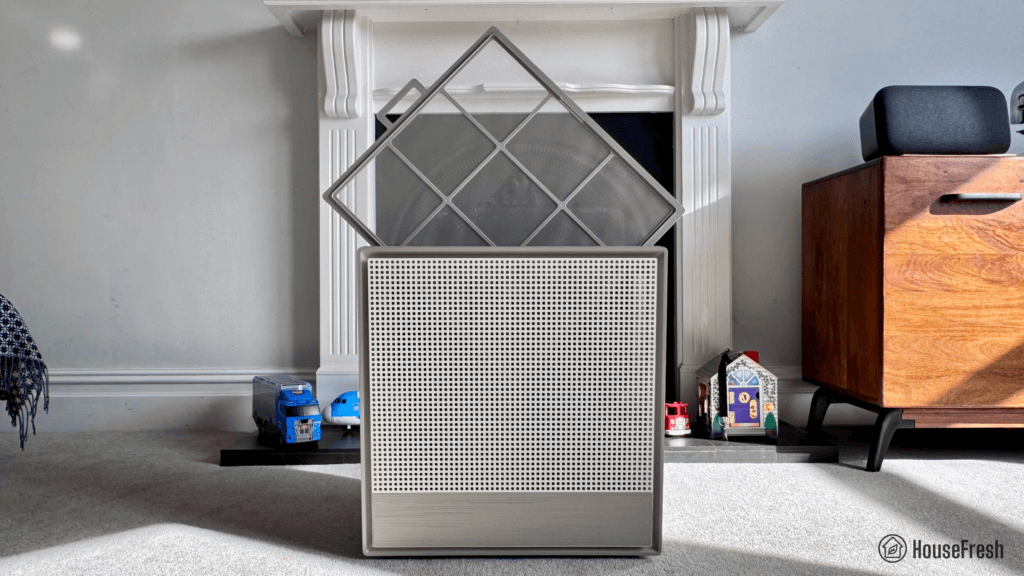
Bonded filters can have better performance at removing particles compared to separate filters, but once the carbon runs out, you will need to replace the whole filter — even if the HEPA filter didn’t need to be replaced.
Design, controls and features
A customizable heavy, rectangular air purifier with two on-board sensors and app connectivity.

Weighing 20.5 lb (or 9.3 kg), the Airmega 250 S is heavier than other similarly powered air purifiers, and it is also wider than other mid-sized devices so it will take up more space on the floor. Luckily, it has hand holds on each side, so it’s fairly easy to move around the house.
It comes with two sensors: one for particles and one for gases. When on auto mode, it switches to high fan speeds as needed based on the readers of the sensors.
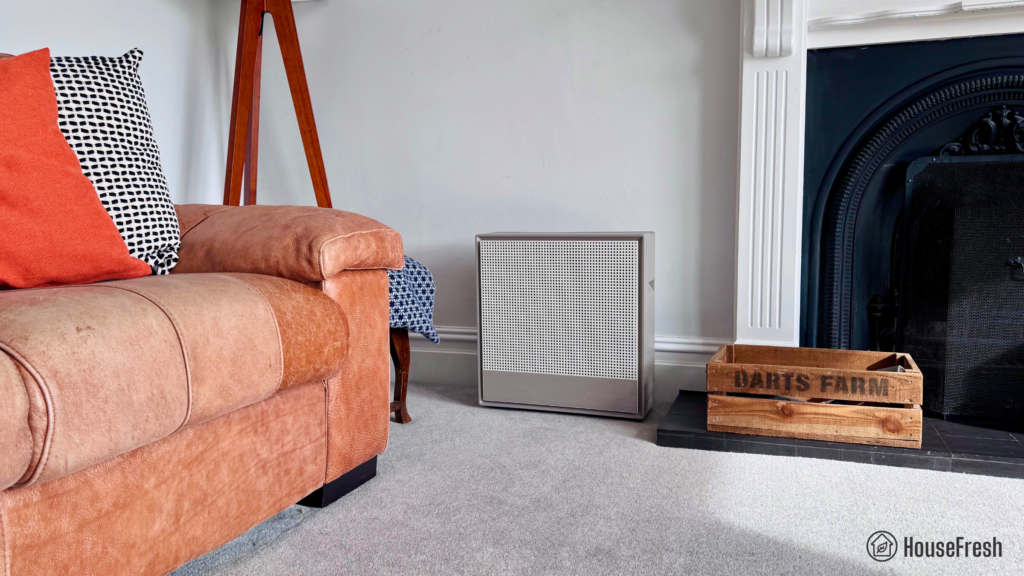
While it has no screen showing air quality levels, it comes with an LED bar that changes color depending on how bad the air quality is — you will also get an alert through your phone once you have setup the app.

The AQI light bar is easy to see and will change color from blue (good) to green (moderate) to yellow (unhealthy) to red (very unhealthy), depending on the sensor readings.
Something I really like is the introduction of a ‘Rapid’ mode, which will supercharge the usual auto mode ensuring the device will hit its highest fan speed until the air quality is improved.
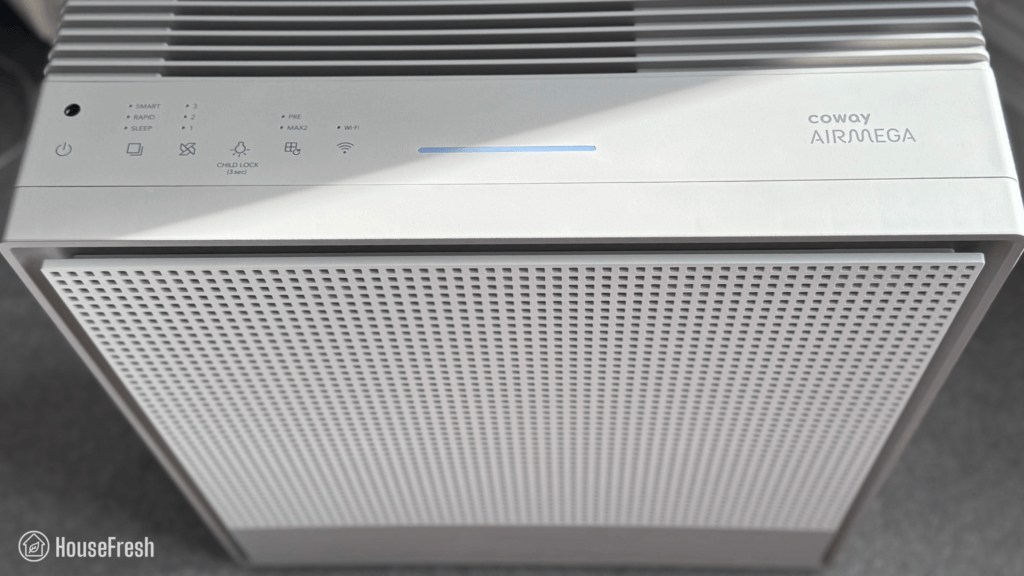
We bought the Airmega 250S in Warm Gray, but if you go with the Airmega 250 Art, you can upgrade the look of the device to include an artwork imprinted on the front cover.
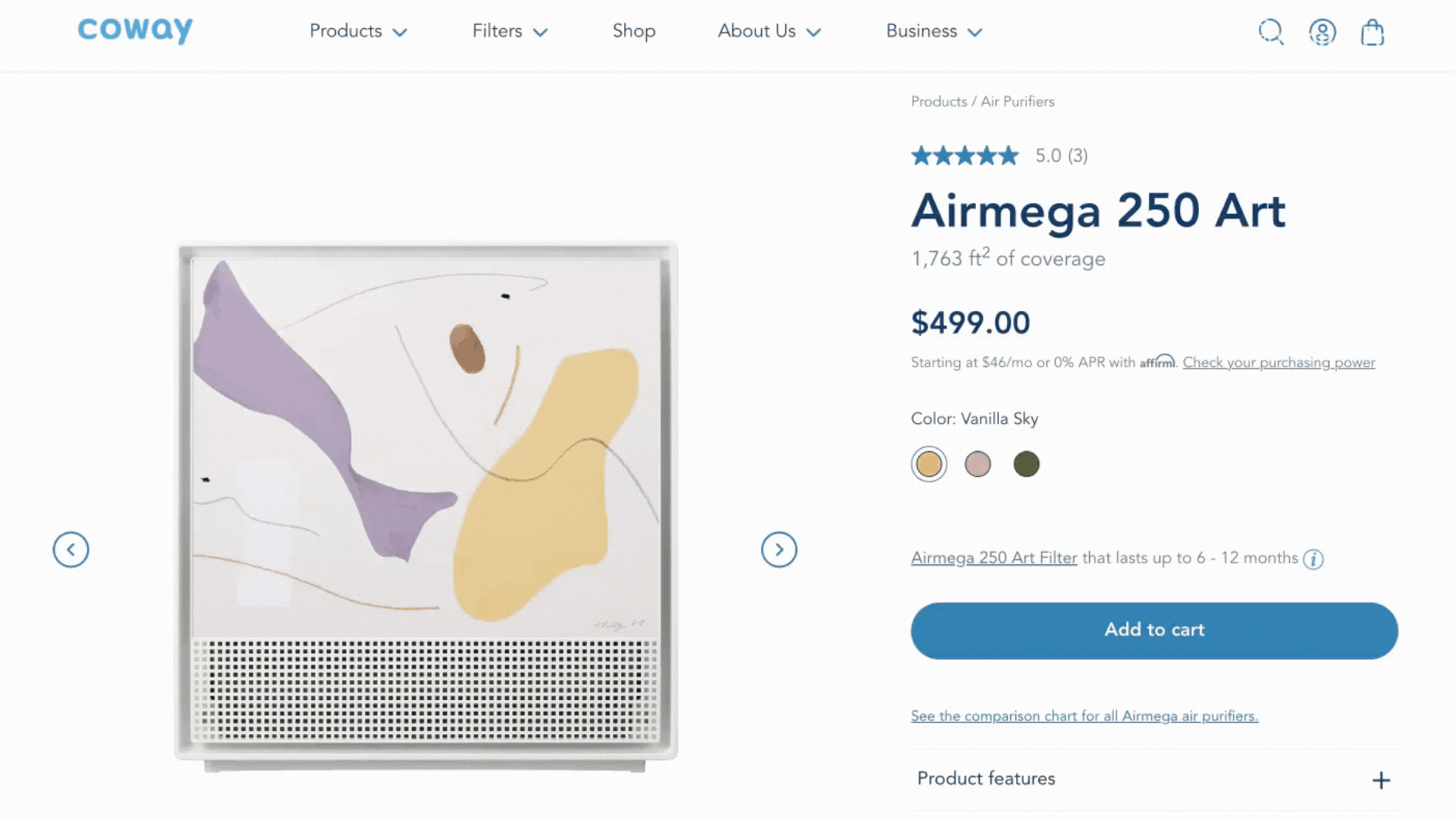
However, it will cost you an additional $50 if you buy from Coway (or an added $100 if you buy from Amazon) and you will be giving up on the app connectivity that you get with the 250S.
The Airmega 250S comes with app connectivity through the Coway IoCare app, which is easy to use and has a clean UX without invasive ads. You can access all the controls you get on the device from the app, with the added option of scheduling routines and accessing historical air quality data.
An issue I encountered with the IoCare app is that it keeps logging me out. This is especially annoying if you don’t have the password handy. Based on the poor 1.4 out of 5 stars the app gets in the App store, it looks like I am not the only one having difficulties. But to be fair to Coway, I haven’t had any other issues with the app apart from this.
Air cleaning performance
We tested the Airmega 250S in our 728 cubic ft. test room, tracking how fast it removed all PM1 particles from the air after we filled the space with incense stick.
We started by testing the particle removal performance of the 250S running at its highest fan speed. According to our PurpleAir Zen sensor, it needed 24 minutes to achieve PM1 zero in our 728 cubic ft. test room:
Based on the natural ventilation of our 728 cubic feet test room, we estimate that it has a top speed PM1 CADR of 249 cfm, which could provide five air changes per hour in rooms up to 373 sq. ft.
With this data in hand, we can compare the performance of the 250S to the results of other similarly-priced air purifiers running at their top speed:
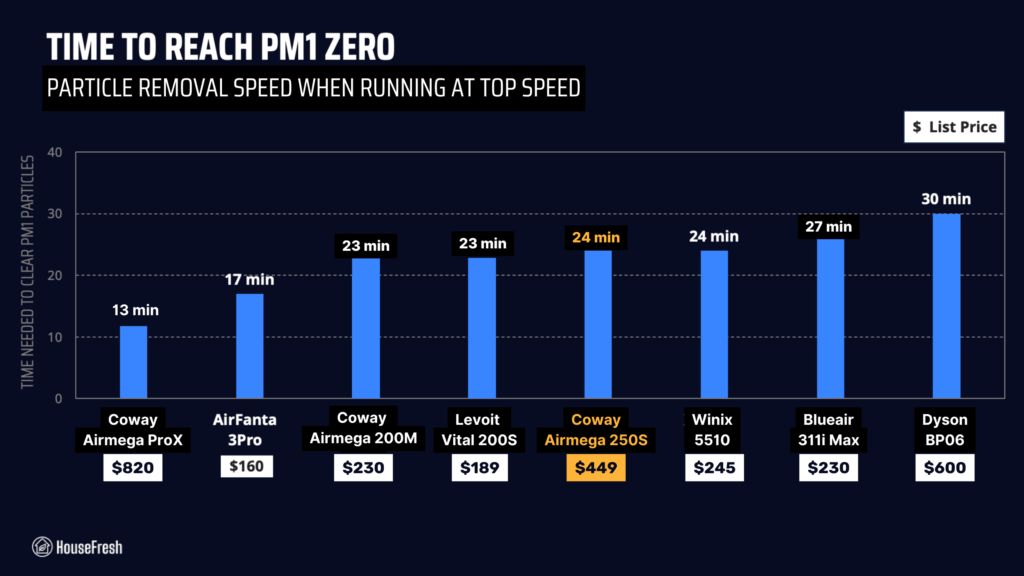
As you can see from the table, air cleaning performance to cost seems fair when benchmarking with other similar powered devices. That said, you still get a much better bang for your buck with something like the AirFanta 3Pro or the Vital 200S.
And if you are set on getting a Coway but not too fussed about it being the 250S, then you should probably look into the Airmega 200M, as it offers better particle removal performance for a cheaper price.
Sound levels
The sound levels of the 250S range from 35.7 dBA to 59.3 dBA — louder than similar performing models like the Smart Air SA600 and the Levoit Vital 200S.
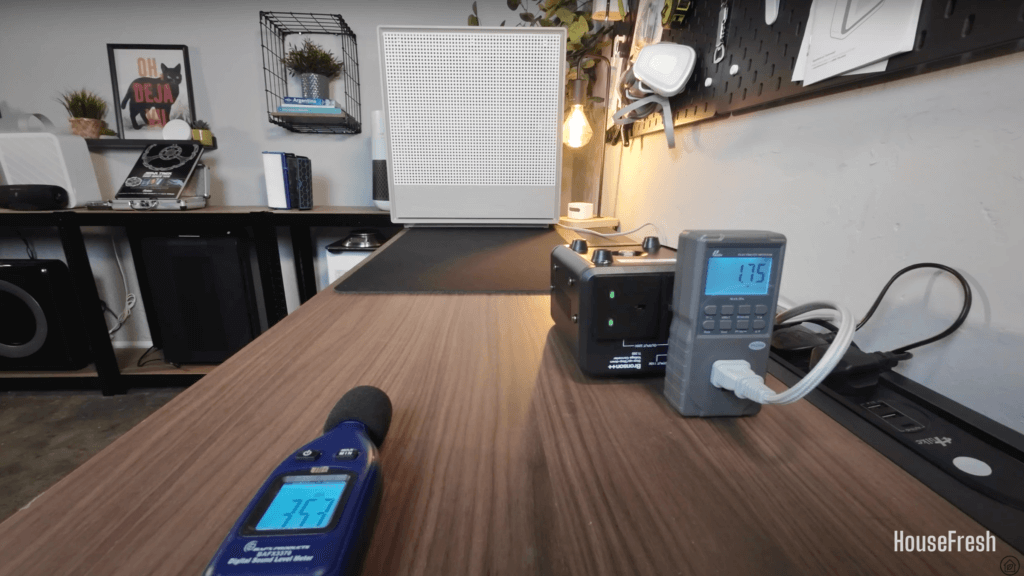
If an air purifier is too loud, you will find yourself turning it off eventually.
That is why we used a sound meter to measure how much sound the Coway Airmega 205S generates from 3 ft. away at each of its fan speeds:
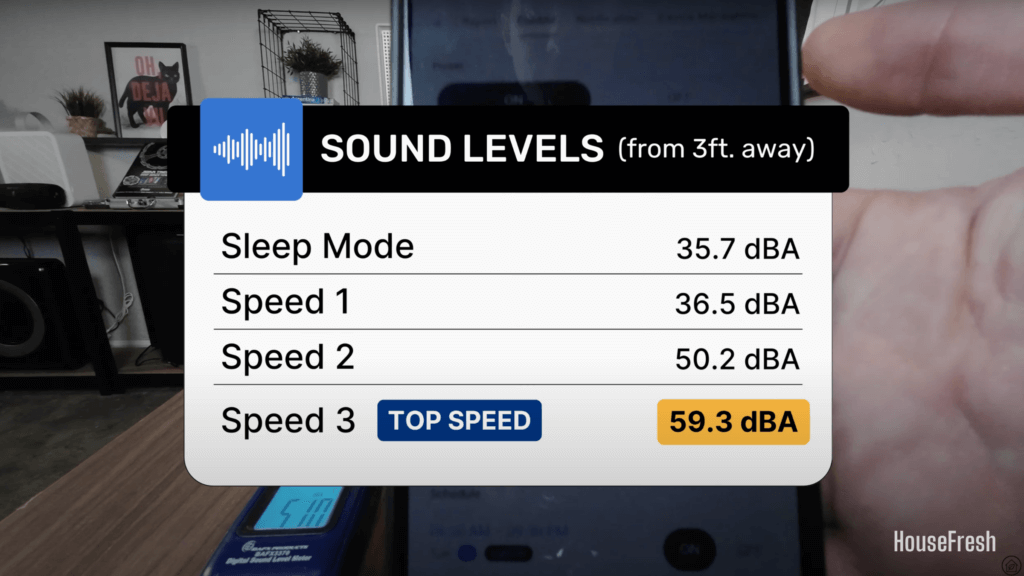
Be aware our background noise is 35 dBA, so the 250S running at sleep mode and set to speed 1 is likely to be quieter than 36.5 dBA if you could measure sound levels in a silent room.
Even though it’s a larger device, when running at its highest fan speed, the 250S is quieter than the Airmega 200M. That said, it is still louder than most other mid-sized traditional air purifiers we benchmarked it against.
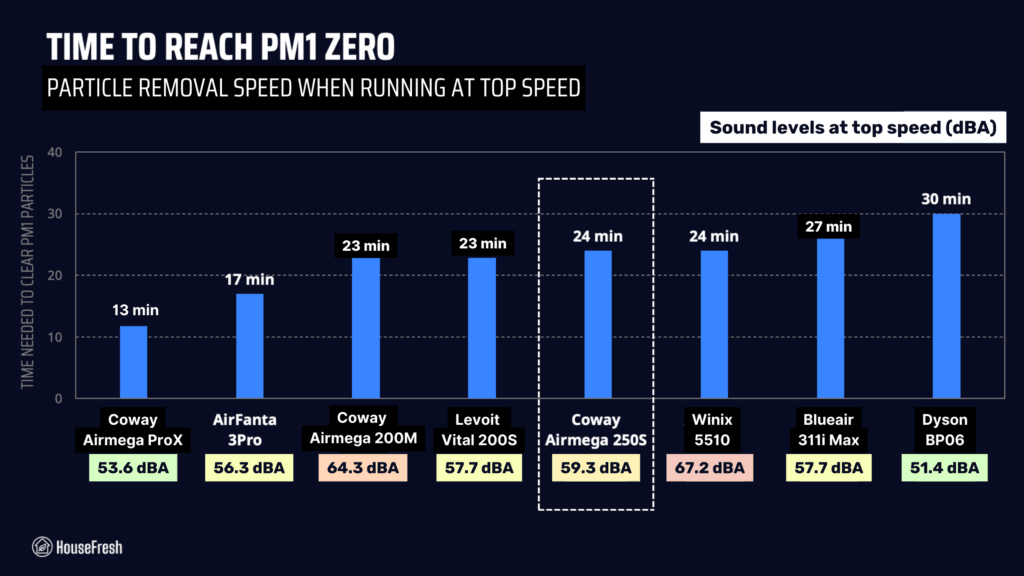
However, it is clear that this device is much louder than a PC fan-powered air purifier like the Luggable XL-7 from CleanAirKits.
One of the benefits of going with a mid-to-large sized air purifier, is that you can run them at low (and quiet) fan speeds while still enjoying powerful air cleaning performance due to use of larger fans and filters. That is why we also test the particle removal speed of our air purifiers running at quiet fan speeds.
The Airmega 250S needed 64 minutes to remove all PM1 particles from the air running at speed 1 (36.5 dBA) and 30 minutes running at speed 2 (50.2 dBA).
When comparing the sub-45 dBA performance of the 250S to other air purifiers running at fan speeds that generate less than 45 decibels, it becomes clear that this air purifier doesn’t offer good air cleaning at quiet operation.

Based on the natural ventilation of our test room, we estimate that the Coway Airmega 250S has a sub-45 dBA PM1 CADR of 91 cfm which would be powerful enough to offer five air changes per hour in rooms no larger than 136.5 sq. ft.
I would like for Coway to add a fan speed in between speed 1 and speed 2 that doesn’t exceed 45 dBA, as this is a sound level that many people will have no issues hearing all day in the background.
Long-term running costs
Running a Coway Airmega 250S will cost you $224.08 per year, combining energy consumption costs and filter replacement prices.
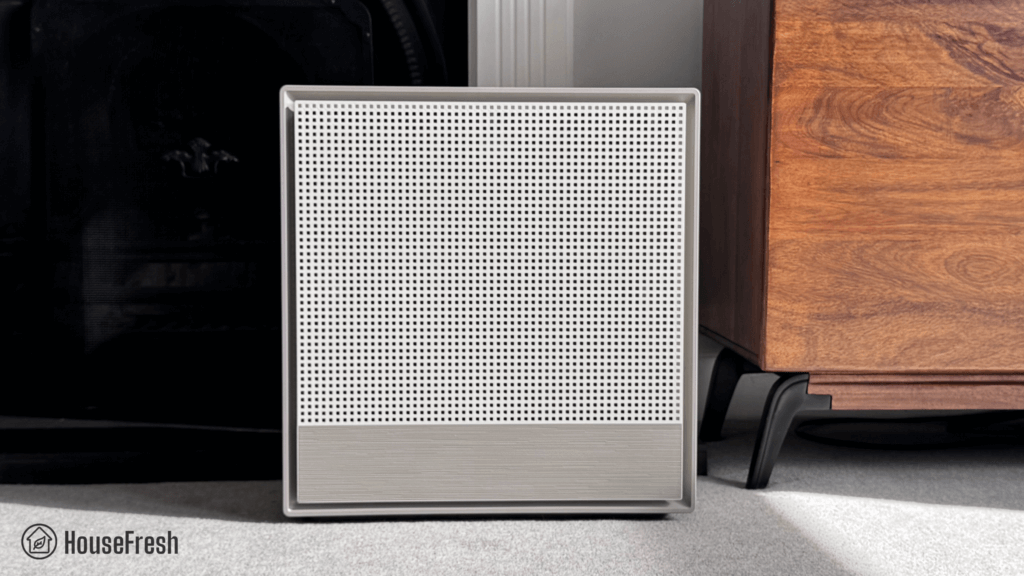
As always, we used our energy meter to record how much energy the Airmega 250S uses when running at each fan speed and also while on standby. If you had to leave your 250S running at its top speed 24/7, it would cost $64.10 in energy costs for a year.

Now, I know this is an unlikely scenario as you will probably prefer having the device running at a quieter fan speed in the background, but I use this ‘worst case scenario’ to estimate the most the 250S could add to your energy bill each year.
But it’s not just energy costs that add to the running cost of an air purifier, you will also need to replace the filters eventually. In the case of the 250S, Coway says that you need to replace the filters every 6-12 months.
The recommended official filter (AP-1720-FP) costs $79.99, which means that you will need to spend $159.98 each year in filter replacements.
When we combine energy costs with filter replacement costs, we find that the Coway Airmega 250S will cost you $224.08 per year to run.
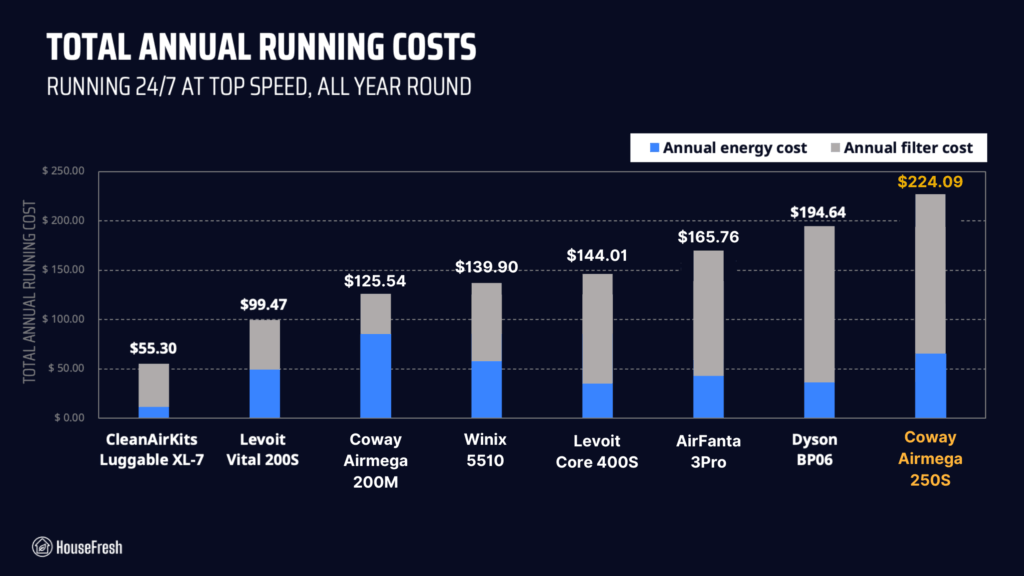
Due to the filters needing to be changed twice per year, the costs are higher than those models that only need changing every 12 months. In this benchmark of similar devices, the 250S ranks as the air purifier with the highest long-term running costs.
- Coway Airmega 250/250S Replacement Filter
- Coway Airmega Max2 filter is an all-in-one that combines Coway Green True HEPA filter with an Activated Carbon filter.
- Coway Green True HEPA removes 99.9% of various airborne particles such as virus, bacteria, fungi and pollen.
- Coway Activated Carbon filter reduces more than 99% of odor from food, cigarette, and pets as well as volatile organic compounds.
- Coway Airmega Max2 filter has an average of 12-month lifespan.
Bottom line: Should you get the Coway Airmega 250S?
For raw money-to-air-cleaning-performance, you will get a better deal with the older AP-15122HH or the newer Airmega 200M.
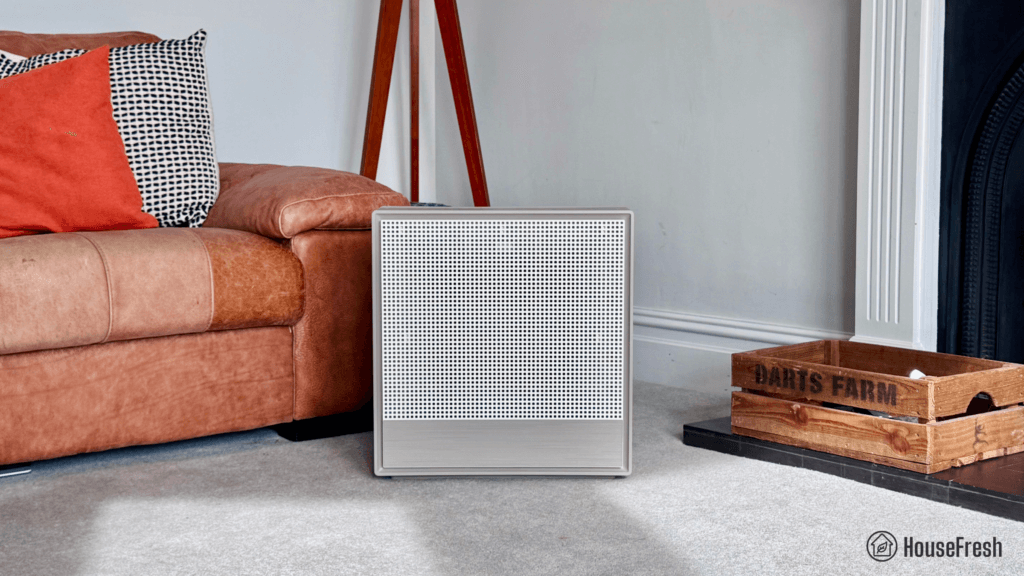
The Airmega 250S has excellent build quality and is beautifully designed, so it is a good option for those who are happy to spend a little more on an air purifier with smartphone connectivity that will look great while cleaning the air.
However, if you like the look of the 250S but are not keen on having yet another app on your phone, then you may want to choose the Airmega 250 instead or even the Airmega 250 Art for a snazzier look.
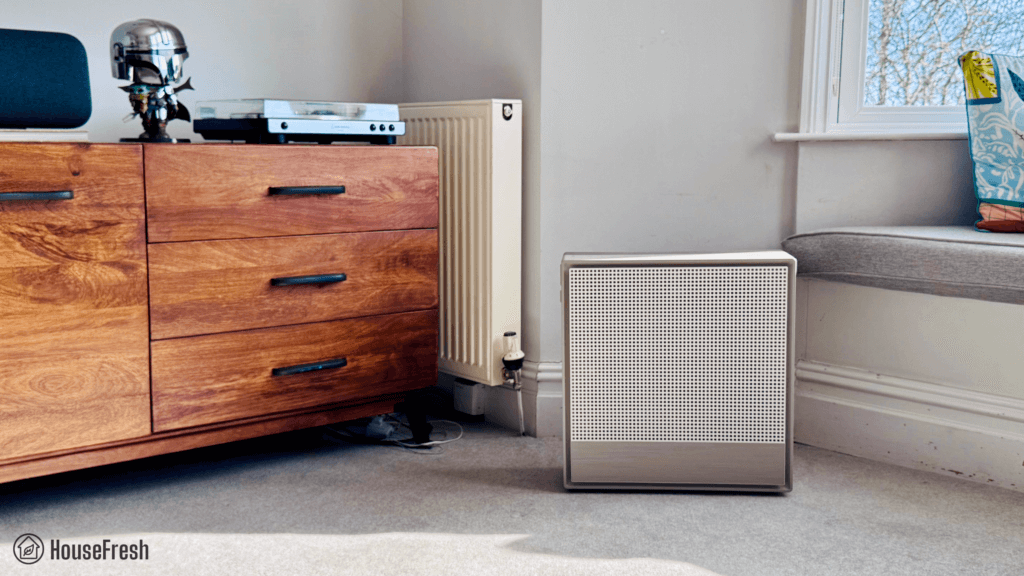
If you’re not convinced by the looks, then I’d say there are other mid-to-large sized air purifiers out there that will give you great air cleaning power even at quiet fan speeds for less or about the same price you’ll pay for the 250S.
A big problem with this device is the small number of fan speeds.
While speed 1 is very quiet, air cleaning performance is not as impressive. Switching to speed 2 will improve this, but the 250S will get noisy as this fan speed goes over 50 dBA, which is louder than most people would like to have running continuously.
It would be much better to see a fan speed in between that runs at just under 45 dBA, as we know that many people could deal with this sound level running all the time in the background.
For those wanting a powerful air purifier with excellent quiet performance, smartphone connectivity, and a design that looks as good as the Coway 250S, check out the Levoit EverestAir.
And if you want to save some money, look into the Winix 5500-2 and the Levoit Vital 200S, both of which will give you the same level of air cleaning power for a cheaper upfront and long-term cost.
I hope my review was helpful and if you have any questions about the Coway Airmega 250S, be sure to leave them in the comments below.


